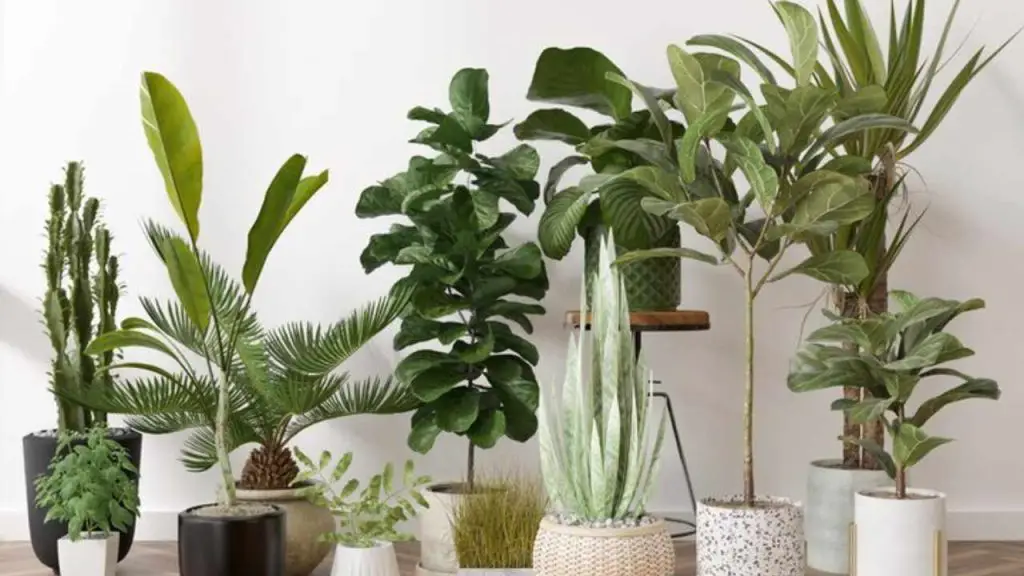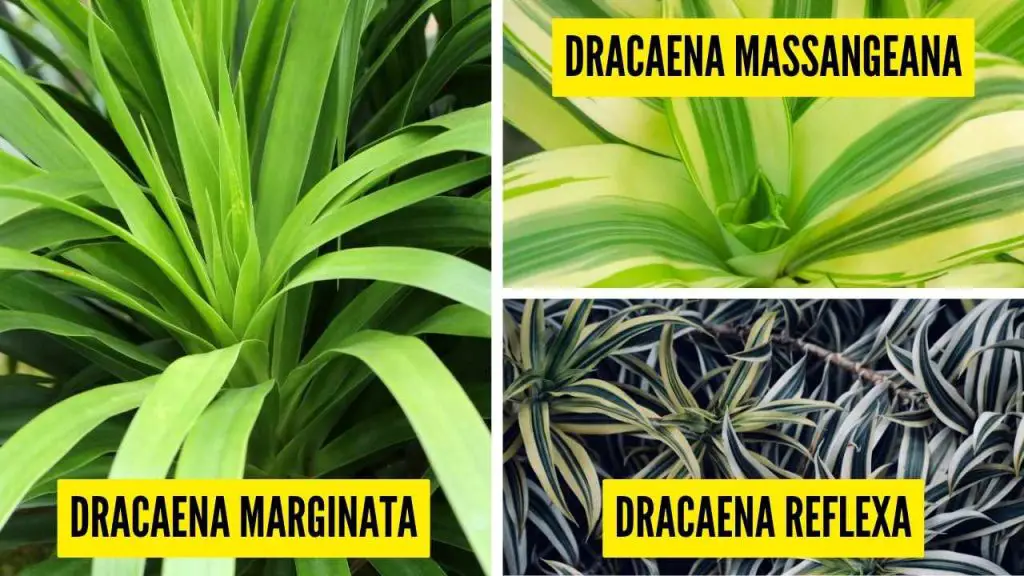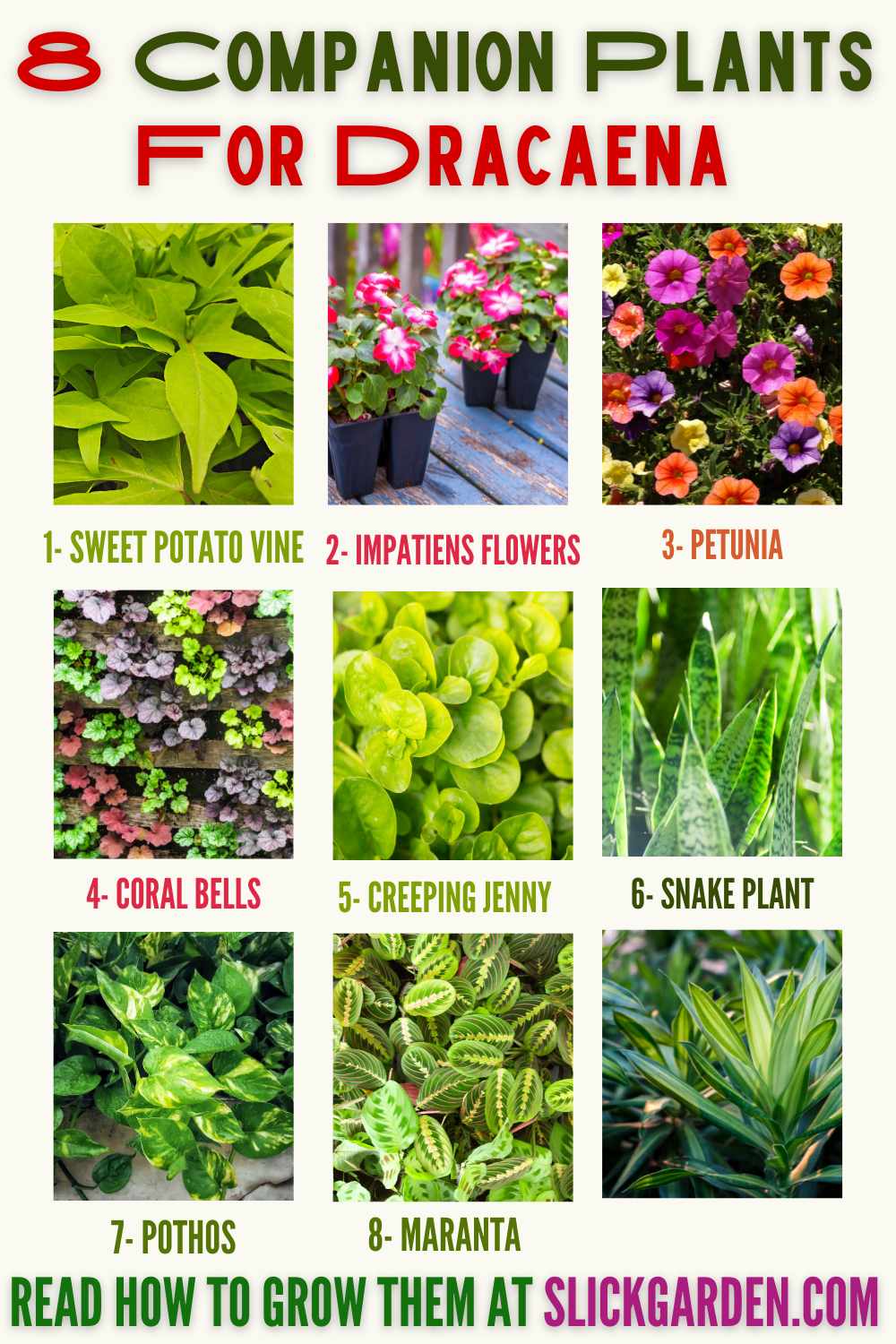Dracaena is a popular indoor plant because it needs little maintenance. The pointy leaves of dracaena create a tropical effect in your indoor environment.
It belongs to the Asparagaceae family and is native to Asia, Africa, Central America, and northern Australia. There are 120 different species of dracaena plant found in the world.

You can choose any variety according to your preferences. Some varieties of dracaena can be used as air purifiers.
Requirement Of Indoor Dracaena Plants
Some factors are crucial when you grow a dracaena plant indoors.
SOIL
When you grow plants in a pot or container then you can easily maintain the fertility of the soil which is not possible when you grow plants in the ground.
It is better to use a high-quality potting mix because it has all the required nutrients that plants need. To improve the drainage quality you can put pebbles in the bottom of the pot to prevent your plant from excessive water.
The pot or container you are using must have drainage holes at the bottom. Drainage is very important because standing water in the pot is not good for dracaena plants when your bought or container has drainage holes then extra water easily removes from these holes.
SUNLIGHT
Indirect indoor light is enough for growing the dracaena plants. For different varieties, direct sunlight is unsuitable because it can burn their lovely leaves.
It means they can easily adjust to indirect indoor light. You must keep the pot or container near a window where your dracaena plant can get the desired amount of indirect sunlight.
WATERING
Another important factor for the growth of any plant is water. As it is mentioned above that as a houseplant dracaena needs little maintenance so you can water it only once a week during the growing season when Winter comes you can reduce watering because this is the period when the growth of the plant stops.
Overwatering is not good because it can cause root rot and many fungal diseases. Wet soil is not good for the health of your plant. It is better to use well-drained soil and make sure the part you are using must have drainage holes at the bottom.
Before watering you can check the soil with the help of your finger. If the soil is dry then you can water it. The yellow leaves show that your plant is receiving more water so you should be careful.
HUMIDITY
For growing a dracaena plant it needs a high humidity level. The brown tips of the leaves show that humidity is too low and indoor air is too dry.
In that situation, you can mist it with a spray bottle of water on the leaves. You can also use a humidifier for your indoor plants to keep our balance of humid levels in your living area.
Different Varieties Of Dracaena

Following are three main varieties of dracaena plants that can easily grow indoors.
1- DRACAENA MARGINATA
This variety of dracaena plants can grow up to 15 feet high and 8 feet wide. The leaves of Dracaena marginata are spiky, long, and thin. You can easily buy this drought-tolerant variety from any local nursery or gardening store.
2- DRACAENA MASSANGEANA
This variety of dracaena resembles a corn plant because of its corn stalk. The trunk of the dracaena massangeana is very thick. The leaves of this variety are very thicker than Dracaena marginata. As this variety tolerates low light conditions that’s why it is a perfect houseplant.
3- DRACAENA REFLEXA
This variety of dracaena is also ideal for indoor environments because of its exceptional looks. The yellow and green leaves of this variety are sword-shaped.
Can Dracaena Be Planted With Other Plants?
This plant does not have many requirements to grow. That’s why it can be the best companion plant because it can complement other plants.
You must choose those plants that need similar water, soil, light, and feeding requirements. When you provide a suitable environment for your plants then you will not face any difficulty in growing them.
Companion Plants For Dracaena

Now we will come to the point as the article is about the best companion plants for dracaena. Following are some best plants that can be grown with dracaena.
1- SWEET POTATO VINE
This is an ornamental plant that looks great when you grow it with a dracaena plant. The addition of this plant will add an unusual effect on your living area. This eye-catching plant is similar to the philodendron. The only thing sweet potato vines need is your love and attention.
As you are growing sweet potato vines indoors but they don’t like dark environments. It is better to place your pot or container near our window where it can get full sun exposure.
Proper light will keep your plant healthy. One thing you should keep in mind is that the color of the plant is due to the light. With time this plant grows so you should transplant it into a larger container so it will get enough space.
This vine can grow up to 10 ft long and 6 ft wide. This is a vigorous vine so pruning can help you to keep the size of the wine according to your need.
The cuttings of these wines easily propagate so you can use them. The growing requirements of the sweet potato vine are similar to those of the dracaena plant. That’s why It is the best companion plant for it.
2- IMPATIENS FLOWERS
If you want to add colors to your indoor growing area then you must choose impatiens flowers as they are good companions of dracaena.
The suitable temperature for growing these incredible flowers is between 65 to 70° F. Like dracaena it also needs moderate humidity levels. Keep the soil moist by regular watering but avoid overwatering because it can damage your plants.
You can grow impatiens flowers from seeds but you have to provide all the specific requirements which can be tricky. It is better to buy a young plant from any gardening store or local nursery.
As you are growing these incredible flowers in the pot then make sure the size of the pot must be 5 inches. You should fill the pot with a high-quality potting mix. The roots of this plant are very delicate so make sure the drainage quality of the soil should be good.
Bright indirect light is better for their growth so you must choose a Southeast or North facing window for keeping impatiens flowers. Low light can become the reason for the low production of flowers and it can also weaken the stem.
For indoor plants, you can also use adjustable grow lights. These lights are very beneficial as they can provide light to multiple plants.
3- PETUNIA
Another houseplant that is included in our list is the petunia. It is not easy to grow petunias indoors because it can be tricky. This sun-loving perennial plant loves to grow outside. When you grow petunias indoors then you have all the needs.
For healthy potted petunia plants, you must keep them near a sunny window. Like dracaena, you must avoid too much heat because this will become the reason for the discoloration of foliage.
You should water petunia plants on time and never leave the soil dry. Petunias are deep drinkers so you should be careful. Examine the soil regularly. You can reduce the frequency of water during the autumn and winter because that temperature is very low.
If you are growing petunia plants in a high-quality potting mix then there is no need of adding fertilizer. In case you are using amended potting soil then you can use low nitrogen dilute fertilizer to encourage the blooming. The best time to apply fertilizer is every two weeks from spring to mid-summer.
Keep Reading
4- CORAL BELLS
The leaves of coral bells are very attractive and lovely. This plant produces small flowers. You can grow coral bells indoors but it needs a spot that receives bright and indirect light. Your indoor temperature must be 45 to 60° Fahrenheit.
You can easily propagate coral bells by using the division method. When you see a 3 to 4-year-old coral bell plant has a woody stem then you can easily divide it. Fall is the best time to divide this plant.
You have to change the frequency of water according to the weather. Hot days need more water than winter days. In summer about 2.5 cm of water a week can be sufficient for coral bell plants.
If you use high-quality potting mix for filling your pot or container then there is no need for adding fertilizer. If you want to encourage new growth then you should remove any dead or damaged leaves.
5- CREEPING JENNY
This plant has lime green to medium green leaves with yellow flowers. The flowers bloom in spring or summer. You can easily grow creeping jenny indoors in a hanging planter or basket. You can also keep the pot on our shelf so its greenery creates an effect of a green waterfall.
Indoor temperature is perfect for creeping Jenny throughout the growing season but in winter this plant needs rest so you should reduce watering and stop feeding it.
Another important quality of this plant is that it can easily adjust in low light areas so you can easily grow it indoors with a dracaena plant. Make sure the soil you are using contains peat moss and sand.
The pot or container you are using must have a drainage hose at the bottom. It is good for the plant’s health.
Overwatering results in many fungal problems. So you should be careful about watering the plant. Soggy and wet soil is not a favorite of creeping Jenny. This is a vigorous plant so you can prune it so it will not become invasive.
6- SNAKE PLANT
Another house plant that belongs to a succulent family and needs little maintenance. Snake plants have the property to purify the air so you can easily select them for your indoor growing area.
Snake plants don’t need a lot of water because constantly moist soil is not good for them. You can water 2 to 3 inches of the soil when needed.
After 1 month of planting a snake plant, you can apply fertilizer to fulfill the need for nutrients. As the plant grows you should transplant it to a large container or pot so its roots can spread easily in the soil.
7- POTHOS
This is a low-maintenance vining plant that is an ideal companion for dracaena. The heart-shaped leaves of pothos easily propagate. Just like dracaena pothos also like to grow in well-drained and high-quality soil.
Pothos tolerate low light conditions so you can choose a location for your pot where it receives bright indirect light.
The right time of watering this plant is when you feel the soil is dry. Liquid fertilizer is best for this house plant during the growing season. The suitable temperature is between 60 and 80 degrees Fahrenheit.
Pruning should be done frequently because it stimulates new growth and you can use long vining stems for propagating it.
8- MARANTA
Another ideal companion plant is maranta. This plant also likes bright indirect light. You can water it every 1 to 2 weeks. Before watering, you should examine the soil if it feels dry then water it.
Overwatering can become the reason for yellowing the leaves or rotting the stems. It is better to use filtered water because this plant is sensitive to our tap water.
The suitable temperature for growing maranta is between 55 and 85 degrees Fahrenheit. This plant prefers a more humid environment. In case, you see the leaves are curling with brown tips, it means the humidity level is very low.
